Festival de las Flores Primaverales de Yeouido en Yeongdeungpo (영등포 여의도 봄꽃축제)
7.8Km 2025-04-02
Yeouido-dong 8-1, Yeongdeungpo-gu, Seúl.
02-2670-3128
Es un festival que tiene lugar a mediados de abril en los alrededores de la calle Yeouiseo-ro (Yunjung-ro), durante la época cuando las flores primaverales como la forsitia, la azalea y el cerezo llegan a su plenitud. La zona en donde se celebra el festival es famosa por la abundante cantidad de árboles de cerezo, una cifra de entre 1.400 a 1.600 ejemplares. Durante el festival, en las cercanías de la Asamblea Nacional se prohíbe la circulación de los vehículos, por lo que podrá disfrutar tranquilamente del túnel formado por las flores de cerezo, y el otro gran espectáculo es la maravillosa vista del río Hangang. Por las noches, el paisaje floreado posee otra atracción apasionante, ya que son iluminados por una instalación de luces con efectos especiales. También se presenta una variedad de espectáculos callejeros y exposiciones de obras artísticas.
Seoul Marina Club & Yacht (서울마리나 클럽&요트)
7.8Km 2025-04-14
Yeouiseo-ro 160, Yeongdeungpo-gu, Seúl
Seoul Marina, situado en Yeouido-dong, de Yeongdeungpo-gu, ofrece todas las opciones relacionadas con yates, desde cursos y prácticas hasta mantenimiento de los equipos. El club dispone de todos los tipos de lanchas y presenta paquetes de tour y renta de lanchas para aquellos que desean disfrutar de esta increíble actividad. En el 1er piso del Centro Marina se localiza una cafetería elegante, salas de convención en el segundo piso, el restorán japonés "Marina Lu" en el tercer piso y un bar de tapas llamado "Tapas Lu" en el cuarto piso. Tiene forma de un yate con la vela izada.
Festival Dongsim Hanmadang (동심한마당)
7.8Km 2025-04-28
Uisadang-daero 1, Yeongdeungpo-gu, Seúl
02-595-3325
Palacio de la Asamblea Nacional (국회의사당)
7.8Km 2021-07-15
Uisadang-daero 1, Yeongdeungpo-gu, Seúl.
Con 24 pilares de granito, una espléndida cúpula y un exterior de color blanco, el Edificio de la Asamblea Nacional es una obra arquitectónica sorprendente. Esta bella edificación se levantó en 1975, después de seis años de obras. Los pilares y la cúpula simbolizan las diversas opiniones del pueblo surgiendo juntas. Una de las razones de por qué este edifico se encuentra entre las atracciones favoritas de los turistas es porque se ubica en los márgenes del río Hangang. El río Hangang se extiende por detrás del palacio legislativo a modo de un hermoso fondo escénico. El edificio está dotado de un centro para vistas, un área de paseo, como así también bancos a lo largo del río. La forma más fácil de visitar el edificio es mediante la presentación de la solicitud en el Centro de Visitas. El visitante puede recorrer varias partes de este palacio legislativo como así también las áreas principales de conferencias. El proceso de solicitud lleva apenas 20 minutos. La única dificultad es que no se ofrece servicio de guía en idioma extranjero. Aquellos que estén interesados en observar a los políticos coreanos en acción, debería presenciar también el modo en que proceden en las sesiones.
Mercado de Pescados y Mariscos de Noryangjin (노량진수산물도매시장)
7.9Km 2024-01-25
Nodeul-ro 674, Dongjak-gu, Seúl.
Este mercados es un importante nexo distribuidor de productos pesquero en la ciudad de Seúl, inaugurado en 1927. Además, es el mercado mayorista más grande de Corea. Desde antes de entrar al recinto podrá sentir el fuerte olor del mar y el pescado. Se quedará impresionado por la escena dinámica de los comerciantes y compradores. Durante los 365 días del año podrá encontrar almejas, cangrejos, calamares, pulpos y otros mariscos y pescados frescos a un precio muy asequible. Además de comprar y llevárselo a casa, también podrá degustar los pescados crudos rebanados en el mismo mercado. Lo único que deberá hacer es comprar el pescado, llevarlo a algún restaurante.
Parque Mangwon del Río Hangang (망원한강공원)
7.9Km 2022-12-15
Maponaru-gil 467, Mapo-gu, Seúl
Cerca de Mapo-gu se encuentra el Parque Mangwon del Río Hangang, al norte del río, entre los puentes Wonhyodaegyo y Seongsandaegyo. Ofrece una gran zona de césped perfecta para pícnics y meriendas. Al estar situado cerca del Estadio de la Copa Mundial, este espacioso parque suele estar lleno de residentes y visitantes. Hay una gran variedad de servicios: camino para bicicletas, piscina exterior, instalaciones deportivas y un muelle para deportes acuáticos. Los puntos de interés cultural cercanos al parque son el pabellón Mangwon y el santuario Jeoldusan.
Terminal de Autobuses Expresos de Seúl (서울고속버스터미널 (경부/영동))
7.9Km 2021-05-20
Sinbanpo-ro 194, Seocho-gu, Seúl.
Situada en el barrio de Banpo-dong de Seúl, la Terminal de Autobuses Expresos de Seúl abrió sus puertas en octubre de 1981 y está conectada con las líneas 3, 7 9 del metro de Seúl. La mayoría de sus rutas son servicios expresos a las principales ciudades del país. El edificio se encuentra al este del centro comercial Shinsegae Central City.
Parque Cultural del Depósito de Combustible de Mapo (마포 문화비축기지)
8.0Km 2024-11-15
Jeungsan-ro 87, Mapo-gu, Seúl
Despues de 41 años de uso como depósito de petróleo, los tanques renacieron como espacio cultural. Los cinco tanques se transformaron en salas de espectáculos, salas de exposiciones y un pabellón multiuso, mientras que un nuevo tanque se construyó para ser utilizado como centro de información. Además, el estacionamiento temporal se convirtio en un patio cultural donde los visitantes pueden relajarse y disfrutar de actividades o espectáculos.
Fortaleza Bukhansanseong (북한산성)
8.0Km 2025-08-19
Bukhan-dong, Deogyang-gu, Goyang-si, Gyeonggi-do.
La Fortaleza Bukhansaseong, ubicada dentro del Parque Nacional del Monte Bukhansan, fue construida en 1711 durante el período de Joseon (1392-1910). Esta fortaleza es de 7 m de alto, 8 m de largo y actualmente tiene más de 290 años. La fortaleza funcionaba como lugar de descanso para los reyes en situaciones de emergencia cuando tenían que abandonar sus palacios de la ciudad capital y retirarse. Por lo tanto, la fortaleza Bukhansanseong fue construida para que se mantuviese completamente independiente de la ciudad capital. Hay 15 portones para proteger la fortaleza. No era tan lujosa como los palacios de los reyes, pero este espacio con 120 habitaciones bastaba como palacio de montaña para el rey. Haciendo uso de la línea de la cresta que comienza en Bakundae en el sur, la Fortaleza Bukhansanseong fue construida para aprovechar las ventajas del terreno accidentado y el acantilado del área que la rodea. Esta fortaleza es del estilo representativo del período de Joseon y su arquitectura tradicional armoniza con la belleza del monte Bukhansan, famoso por sus encantadores formas de granito. El cercado de la fortaleza le permite seguir las paredes en una caminata de ocio. En otoño, las hojas que tornan el color de la montaña hacen que la fortaleza sea aún más encantadora.
Terminal de Autobuses Central City en Seúl (센트럴시티터미널(호남선))
8.0Km 2021-05-20
Sinbanpo-ro 190, Seocho-gu, Seúl
La terminal se encuentra en un nexo de transporte de tres líneas de metro de Seúl (3, 7 y 9), y ofrece servicios interurbanos a más de 60 ciudades de todo el país. La terminal se encuentra dentro del complejo comercial Shinsegae Central City, al oeste del edificio de la Terminal de Autobuses Expresos de Seúl.
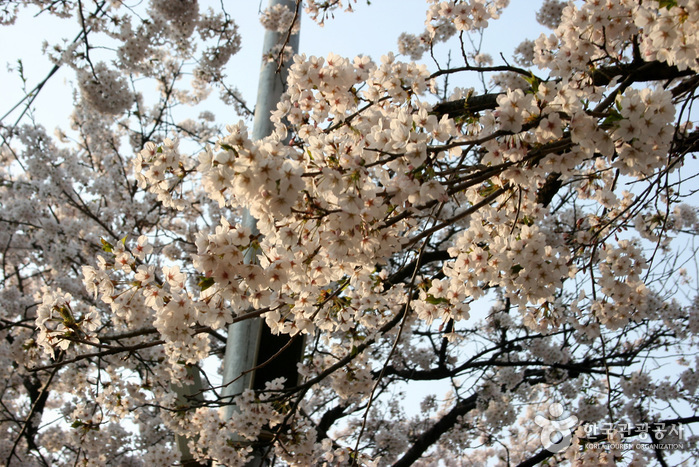
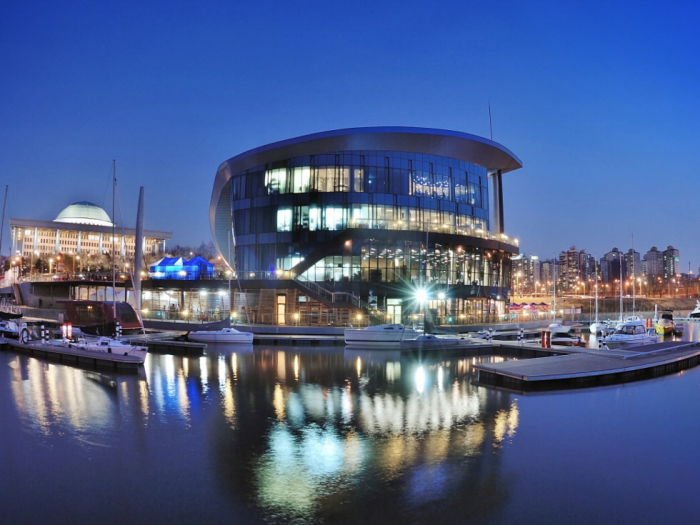
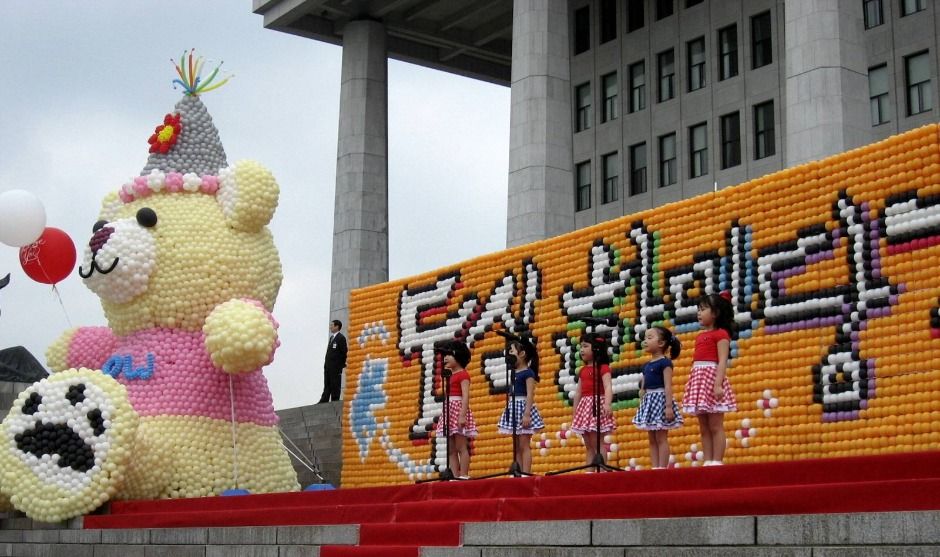
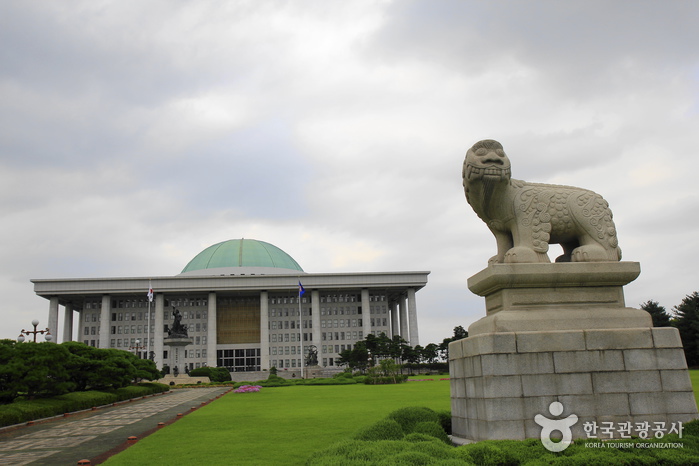
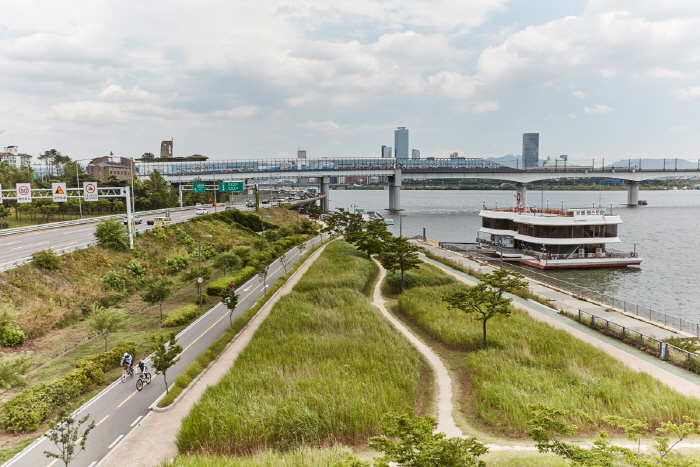
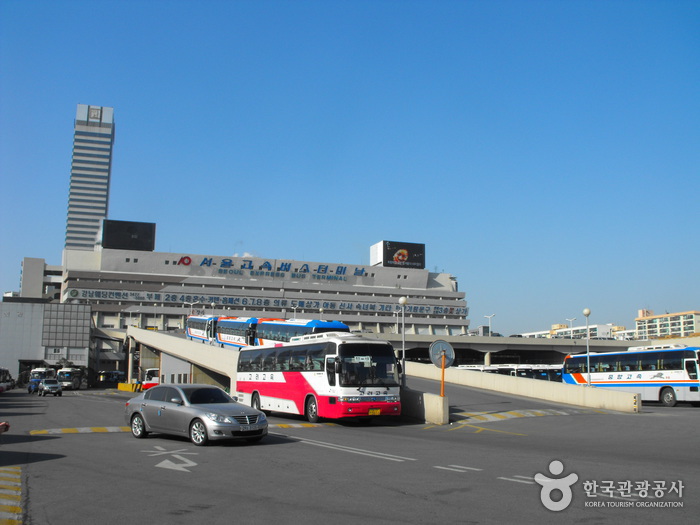
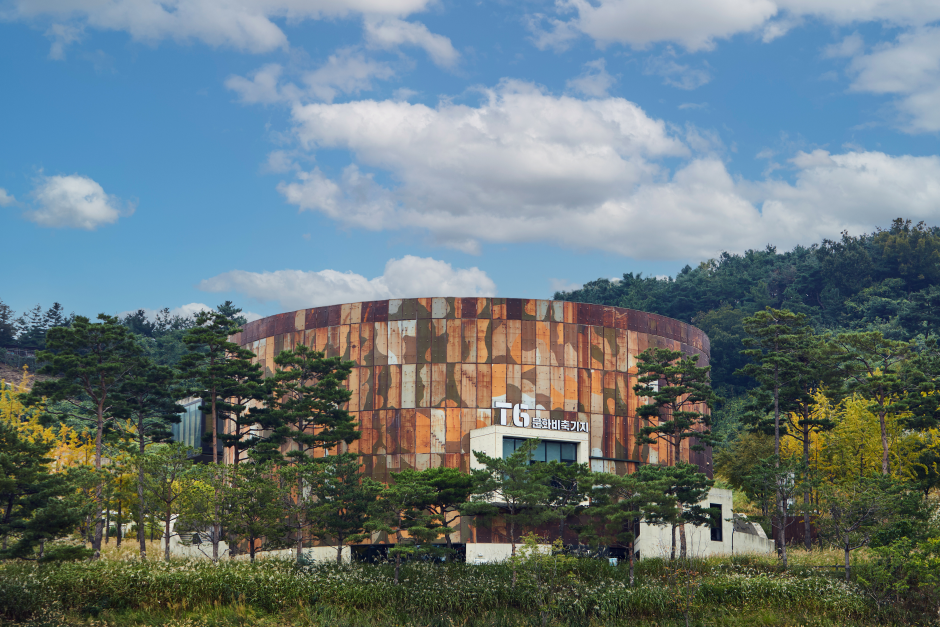
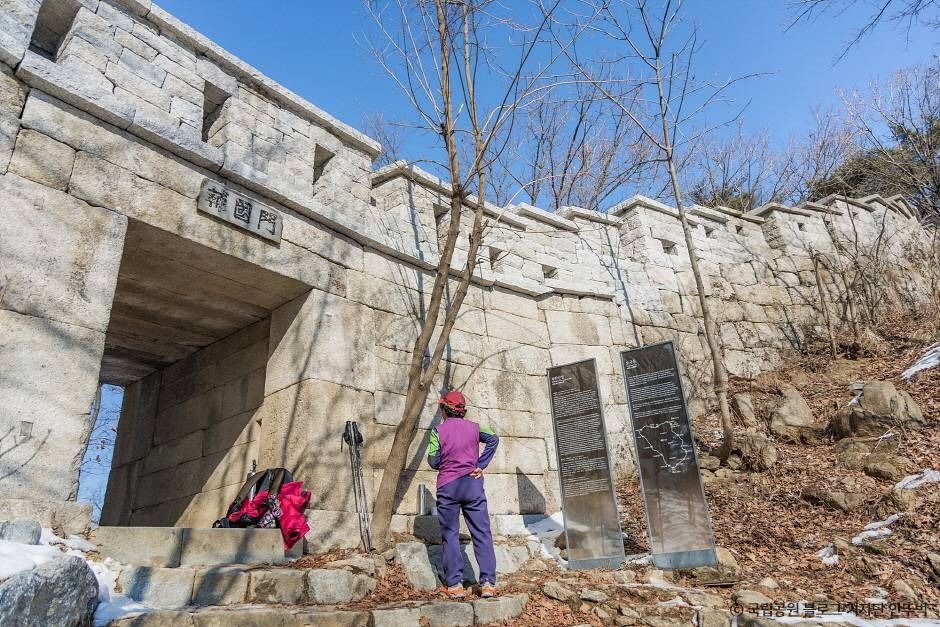
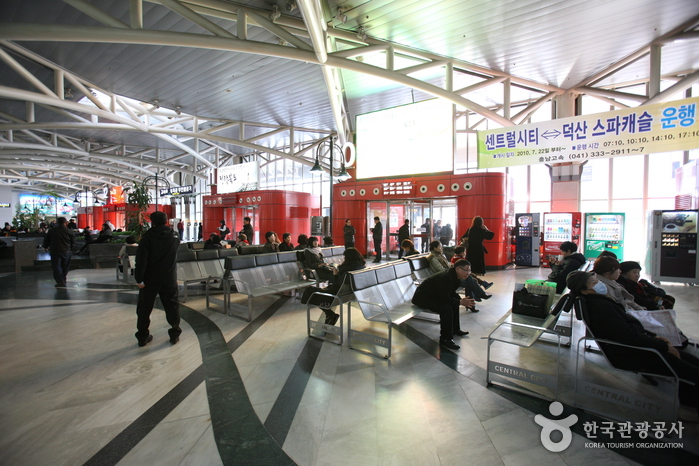
 Español
Español
 한국어
한국어 English
English 日本語
日本語 中文(简体)
中文(简体) Deutsch
Deutsch Français
Français Русский
Русский